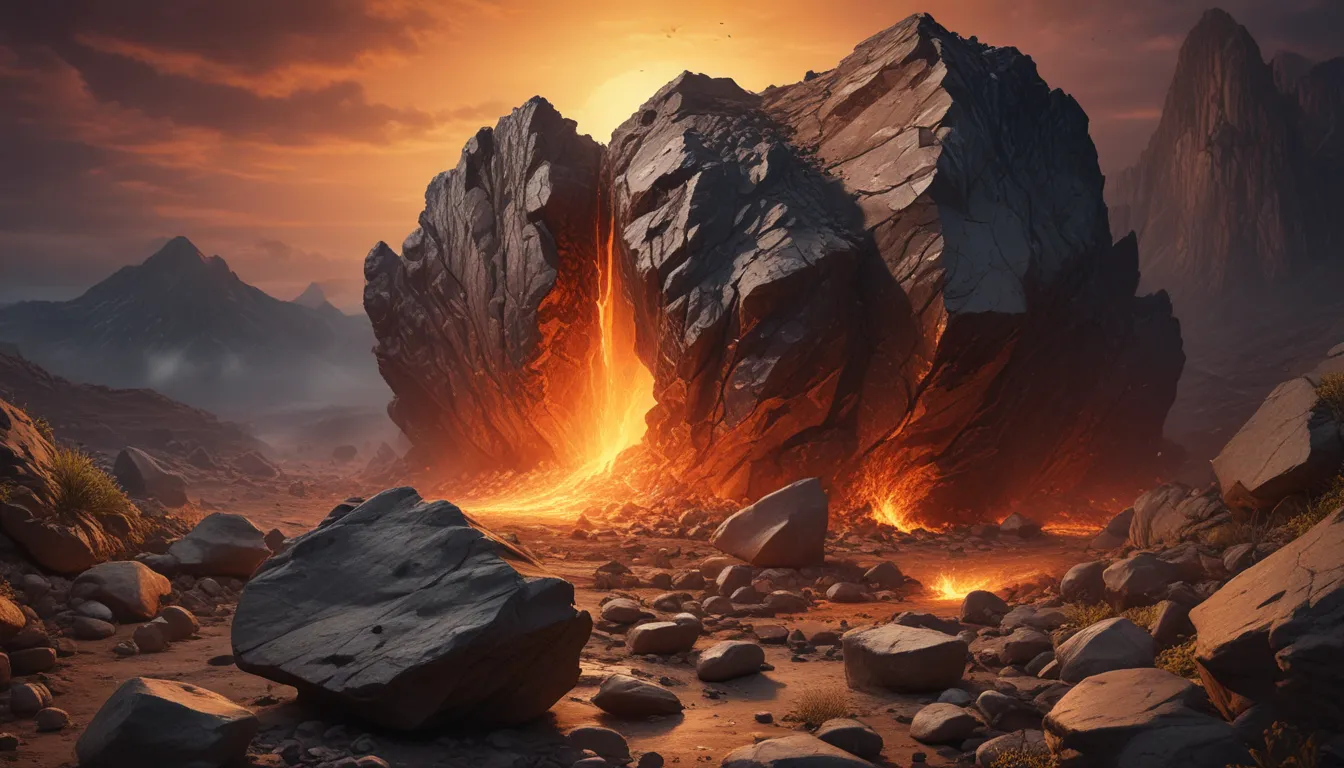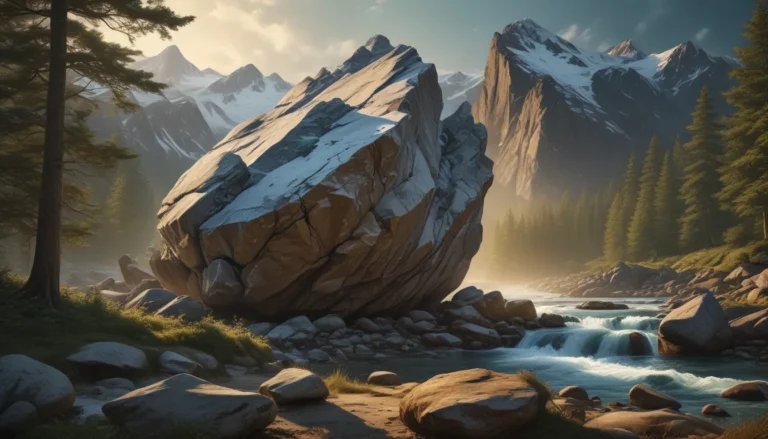A Note About Images: The images used in our articles are for illustration purposes only and may not exactly match the content. They are meant to engage readers, but the text should be relied upon for accurate information.
Are you fascinated by the mysteries of the natural world and intrigued by the forces that shape our planet’s crust? If so, igneous rocks hold a captivating story that will leave you in awe of their beauty and significance. Formed through the cooling and solidification of magma or lava, these rocks offer a glimpse into Earth’s dynamic nature and the intricate processes that have been at work for millions of years. Whether you are a seasoned geology enthusiast or simply curious about the wonders of Earth’s geological heritage, exploring the extraordinary facts about igneous rocks will ignite your fascination with this marvel of nature.
Unveiling the Mysteries of Igneous Rocks:
Igneous rock, with its origins in molten magma or lava, comprises a significant portion of the Earth’s crust. It comes in a variety of colors and textures, each revealing a unique story about the geological history of our planet. Let’s embark on a journey to uncover eleven extraordinary facts about igneous rocks that will deepen your appreciation for the wonders of geology.
The Formation of Igneous Rocks:
Igneous rocks are created when molten magma or lava cools and solidifies. The intense heat and pressure deep within the Earth’s crust cause rocks to melt, forming a liquid substance. As this liquid material rises to the surface or is ejected from volcanoes, it cools rapidly, resulting in the formation of igneous rock.
The Three Main Types of Igneous Rocks:
There are three main types of igneous rocks: intrusive (plutonic), extrusive (volcanic), and hypabyssal. Intrusive igneous rock forms beneath the Earth’s surface and cools slowly, allowing large crystals to develop. Extrusive igneous rock, on the other hand, forms on or near the surface as a result of volcanic activity, cooling quickly and resulting in smaller crystals. Hypabyssal igneous rock exhibits characteristics of both intrusive and extrusive types.
Igneous Rocks and Earth’s Geological Features:
Igneous rocks play a crucial role in shaping the Earth’s geological features and provide valuable insights into our planet’s history. Approximately 95% of the Earth’s crust is composed of igneous rock, highlighting its significance in unraveling the mysteries of Earth’s past.
The Diverse Colors and Textures of Igneous Rocks:
Igneous rocks exhibit an incredible diversity of colors and textures, reflecting variations in mineral compositions and cooling rates during formation. From the dark and dense basalt to the light and porous pumice, the igneous rock family offers a wide spectrum of appearances.
Igneous Rocks as a Source of Valuable Minerals:
Igneous rocks serve as a significant source of valuable minerals such as gold, silver, granite, and quartz. These minerals are vital resources for construction, manufacturing, and various other industries, showcasing the practical importance of igneous rocks in our daily lives.
Understanding Earth’s Geological History through Igneous Rocks:
Studying igneous rocks is crucial for gaining insights into the Earth’s geological history. By analyzing the composition and structure of igneous rock formations, scientists can unravel the mysteries of past volcanic activity, tectonic plate movements, and the evolution of the Earth’s crust over millions of years.
Igneous Rock Beyond Earth:
While igneous rocks are predominantly found on Earth, they can also be found on other celestial bodies such as the Moon, Mars, and asteroids. Exploring igneous rocks on these extraterrestrial bodies provides valuable information about their geological processes and history.
Practical Applications of Igneous Rocks:
Igneous rocks have important practical applications, particularly in the construction industry. Granite, a popular type of igneous rock, is widely used as a building material for countertops, flooring, and monuments due to its durability and aesthetic appeal.
Insights into Earth’s Interior through Igneous Rocks:
The study of igneous rocks plays a vital role in understanding the Earth’s interior. By examining the composition and properties of igneous rock samples, scientists can infer valuable information about the chemical composition and processes occurring deep within the Earth.
Harnessing Geothermal Energy from Igneous Rocks:
Some types of igneous rocks, such as basalt, have the potential to be used as a geothermal energy source. Geothermal energy harnesses the heat stored within the Earth to generate electricity and heat buildings, offering a sustainable and low-carbon emissions energy resource.
Iconic Geological Landmarks Formed by Igneous Rocks:
Igneous rock formations create some of the most iconic geological landmarks on Earth, from the towering granite cliffs of Yosemite National Park to the volcanic landscapes of Iceland. These formations exemplify the beauty and power of nature’s geological forces.
Embracing the Marvels of Igneous Rocks:
In conclusion, igneous rocks are truly extraordinary natural formations that offer a wealth of fascinating facts to explore. From their volcanic origins to their diverse variability, these rocks provide a window into Earth’s fiery past. Understanding the facts about igneous rocks enriches our knowledge of geology and allows us to appreciate the complexity of the natural world around us. So, the next time you encounter igneous rocks, take a moment to marvel at their incredible history and intricate formations.
FAQs about Igneous Rocks:
Q: What is the definition of igneous rocks?
A: Igneous rocks are formed through the solidification of molten magma or lava, with varieties including intrusive and extrusive types.
Q: How are igneous rocks classified?
A: Igneous rocks are classified based on their texture and composition, revealing insights into their formation processes.
Q: Where are igneous rocks commonly found?
A: Igneous rocks can be found in volcanic regions, areas with recent volcanic activity, and deep within the Earth’s crust.
Q: What are some examples of igneous rocks?
A: Common examples of igneous rocks include granite, basalt, pumice, obsidian, and andesite, each with unique characteristics and applications.
Q: How are igneous rocks used in everyday life?
A: Igneous rocks have practical applications in construction, manufacturing, and various industries, showcasing their versatility and importance.
Q: Are igneous rocks only found on Earth?
A: While primarily found on Earth, igneous rocks can also be found on other rocky planets and moons within our solar system, providing insights into celestial geological processes.
As you delve into the wonders of igneous rocks, remember that each discovery holds a piece of Earth’s geological puzzle, waiting to be unveiled and appreciated. Embrace the marvels of nature’s intricate formations and the stories they tell about our planet’s past. Enjoy the journey of exploration and discovery as you uncover the extraordinary facts about igneous rocks that shape our world’s geological heritage.






